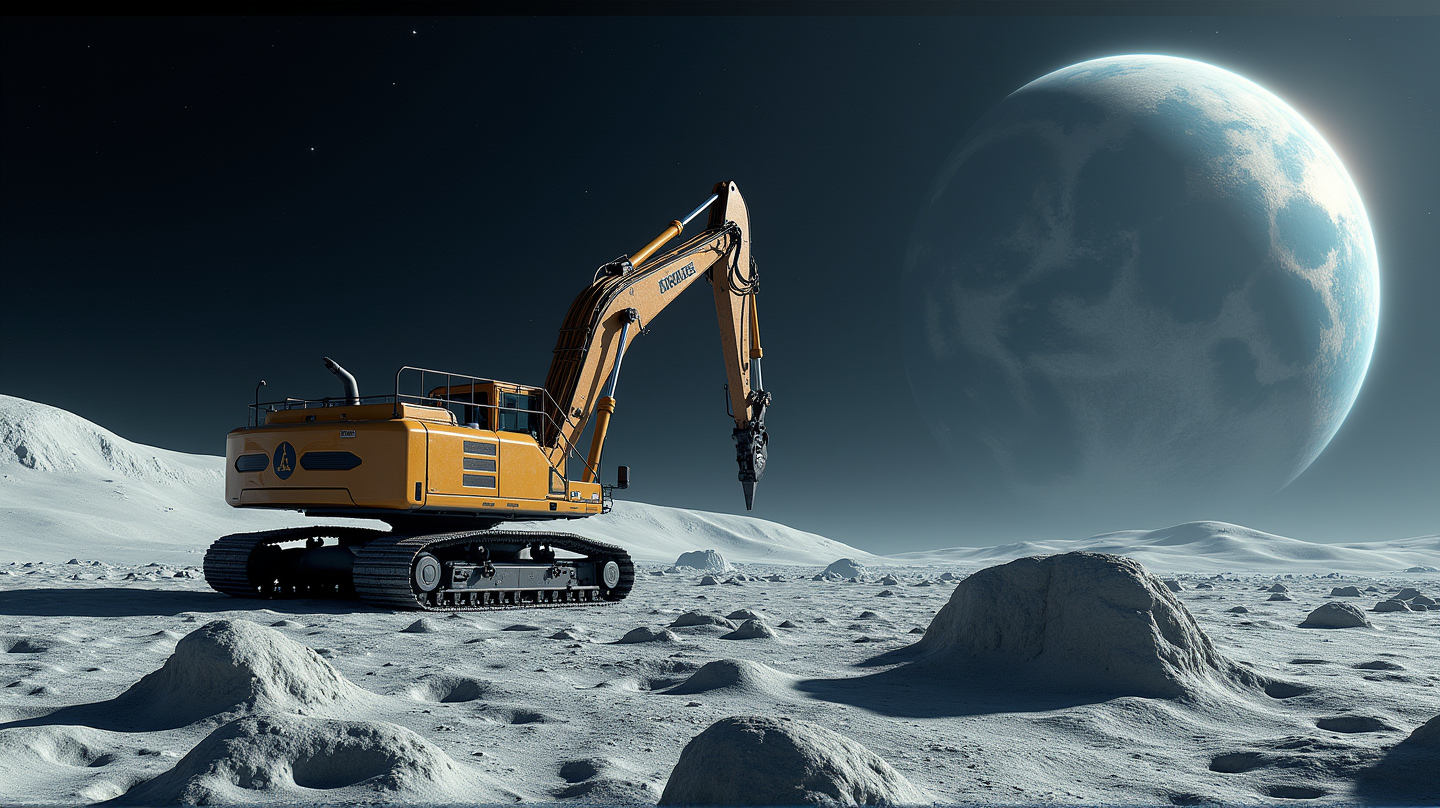Revolutionizing Space Resource: Lunar Excavator Prototype Ready to Harvest Moon's Helium-3
NASA-backed startup Interlune and Vermeer unveil an excavator prototype poised to revolutionize energy by mining helium-3 from the moon.

In a groundbreaking announcement, Iowa-based Vermeer, a renowned industrial equipment manufacturer, has revealed the debut of a full-scale lunar excavator prototype as part of their collaborative effort with the innovative startup, Interlune. This announcement unveils a significant step forward in the quest to mine helium-3 from the moon’s surface, a pursuit with the potential to revolutionize Earth’s technology and energy markets. According to Interesting Engineering, this endeavor could change the landscape of energy resources.
Helium-3: The Game-Changer Hidden on the Moon
Helium-3, a rare isotope on Earth, is believed to be plentiful on the moon, embedded in the lunar soil after billions of years of solar wind exposure. The importance of helium-3 cannot be overstated; its applications in the manufacturing of semiconductors, fiber optics, and superconductors are pivotal. Most dramatically, helium-3 could be the critical component in developing nuclear fusion, representing the coveted ‘Holy Grail’ of energy generation.
The Prototype: Merging Innovation and Resilience
Vermeer’s lunar excavator prototype, crafted with Interlune’s pioneering vision, is engineered to operate in the moon’s harsh environment. This machine is designed to process 100 metric tons of lunar regolith per hour, extracting helium-3 efficiently. The rigorous demands of lunar operation—extreme temperatures, lack of atmosphere, and high radiation—necessitate not just robust machinery but also breakthrough technological innovations.
Global Race to the Moon: Japan’s Ambitions
As Vermeer and Interlune scale new heights, global eyes are also on Japan’s Komatsu, who are keenly developing their lunar excavation technologies. Komatsu showcased its electrically powered prototype at CES 2025, prioritizing the adaptation of machinery to withstand lunar conditions where traditional combustion engines falter.
Strategic Aims: Aiming for the Moon by 2030
Interlune, backed by NASA and the US Department of Energy, has ambitious plans to kick off lunar missions by 2030. The Vermeer-Interlune excavator exemplifies this drive for lunar industrialization—a frontier akin to historic deep-sea pursuits or the early days of oil drilling. This venture not only promises advancement in technology and resource management but also has profound implications for global geopolitics and energy dynamics.
Eyes on the Future: Beyond Earth into New Frontiers
The successful development of such technology means the dawn of lunar industrialization. Whoever manages to tap into the moon’s helium-3 reserves first may secure a strategic advantage, potentially affecting the global energy economy. As the race heats up, it becomes evident that the moon may hold the key to energy independence and technological abundance.

